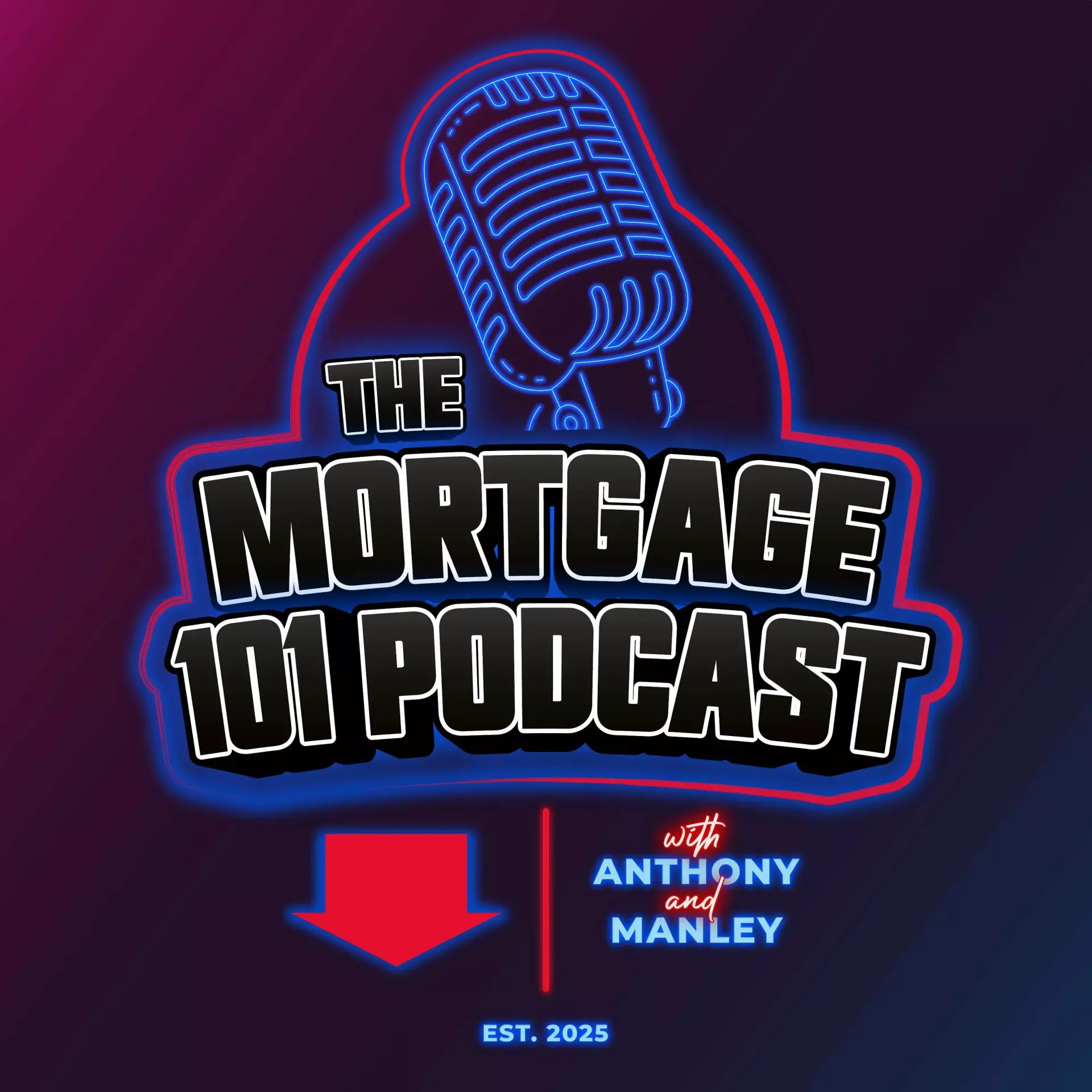Mortgage 101 Podcast: Episode 10 - Mortgage Market Madness: Rates Drop or Spike?
In Episode 10 of the Mortgage 101 Podcast, hosts Anthony and Manley tackle the volatile 2025 housing market, recorded live at Red Rooster Studios in Wisconsin. They analyze unpredictable bond market swings, the Federal Reserve’s cautious stance on rates, and the looming housing inventory crisis. A rapid-fire buzzword segment explains critical terms like pre-approval, escrow, underwriting, rate lock, closing costs, appraisals, PMI, and refinancing, offering actionable insights for homebuyers to navigate rate fluctuations and prepare strategically.
Listen to the full episode: https://youtu.be/7eDUhZOo4Uc?feature=shared
[00:00] Welcome to Mortgage 101: Episode 10
Manley: Welcome to Episode 10 of the Mortgage 101 Podcast! I’m Manley in Wisconsin, joined by Anthony, who flew 14 hours from Kauai to join me live at Red Rooster Studios.
Anthony: Aloha, Manley! I’m thrilled to be here, ready to tackle the 2025 housing market’s wild swings.
Manley: Today, we’re breaking down bond market volatility, the Fed’s rate stance, and the housing inventory crisis, plus a rapid-fire buzzword segment with stand-in producer Banner.
[00:41] Mortgage Market Madness: Bond Market Swings
Why is the 2025 housing market so volatile?
Anthony: The bond market’s swinging like a bad golf game—unpredictable and wild. Volatility spices up the mortgage world, either boosting your budget or clipping it.
Manley: Headlines shift daily—rates up, rates down, tariffs on, tariffs off. Social media and memes, like those about the administration, amplify uncertainty, impacting buyer confidence.
Anthony: Markets hate uncertainty, pricing defensively when volatility spikes. Prepare for anything—greener pastures are coming, but short-term rate spikes are possible due to events like tomorrow’s PCE data release.
[04:29] Federal Reserve’s Rate Stance
Will mortgage rates drop or spike in 2025?
Manley: The Fed’s holding rates steady to avoid a repeat of the 1980s, where easing too soon caused a boomerang effect with inflation.
Anthony: Powell’s focused on consistency, not quick cuts. Quantitative tightening continues until data shows stability, so expect rates to stay stable or dip slowly, with potential spikes from unexpected events.
Manley: Don’t base decisions on fear—use data and consult professionals to navigate this “transitory” volatility.
[07:07] Housing Inventory Crisis: Déjà Vu?
Is the housing market facing another inventory crunch?
Anthony: We’re inching toward 2020–2021, when finding a home was like winning the lottery—multiple offers, crazy demands like mineral rights or airspace clauses.
Manley: High rates pushed prices up, and waiting to time the market is risky. Renting means missing principal paydown, equity growth, and tax benefits.
Anthony: Act now if you’re planning to buy within five years—get pre-approved and understand your options to avoid missing out when inventory tightens.
[09:06] Mortgage Mindset: Rate Drop Reality Check
Are rate drops a dream or reality?
Anthony: Plan for stability, not drastic drops. Rates may ease slowly, but spikes could hit if PCE data or global events shake the market.
Manley: Keep your lender close, documents closer, and expectations flexible. This is a marathon, not a sprint—lock rates when they’re favorable to avoid gambling on the bottom.
Anthony: Education is key. Understand where rates were, are, and might go to make informed decisions.
[10:28] Rapid-Fire Buzzword Segment
What are the must-know mortgage terms for 2025?
Banner: Let’s hit rapid-fire buzzwords—keep answers concise!
Pre-Approval (Anthony)
Anthony: Pre-approval is your golden ticket, showing sellers you’re serious with verified buying power, payment details, and out-of-pocket costs, letting you shop confidently.
Escrow (Manley)
Manley: Escrow varies by region—in some states, it’s the contract acceptance period before funding; elsewhere, it’s monthly tax and insurance payments to ensure funds are ready.
Underwriting (Anthony)
Anthony: Underwriting is the final judgment on your loan, where a seasoned lender’s relationship with underwriters ensures a clean, proactive approval process.
Rate Lock (Manley)
Manley: A rate lock secures your interest rate for 30–45 days, protecting against spikes, with a one-time float-down option if rates drop by 3/8 of a percent or more.
Closing Costs (Anthony)
Anthony: Closing costs include third-party fees (title, appraisal), prorations (taxes, insurance), and points—watch for sneaky lender fees and compare estimates carefully.
Appraisals (Manley)
Manley: Appraisals use science, not opinion, comparing recent sales of similar homes to set a fair value, often aligning with the offer unless significantly overbid.
PMI - Private Mortgage Insurance (Anthony)
Anthony: PMI protects lenders when you put less than 20% down, enabling low down payments (3–5%) with affordable costs driven by credit score, debt-to-income, and loan-to-value ratios.
Refinance (Manley)
Manley: Refinancing saves money if the breakeven (cost divided by monthly savings) is 18–36 months—work with a trusted lender to avoid predatory fees and ensure it makes financial sense.
[36:06] Rate Watch and Prediction Tracker
What’s the outlook for mortgage rates?
Anthony: Our initial forecast was 6.15%, but volatility led us to raise it to 6.8%. We’re sticking with 6.1% now, as markets stabilize, though guest Bell predicted a bullish 5.5–5.75%.
Manley: Volatility from tariffs, geopolitics, and social media (yes, even tweets) keeps markets unpredictable. Trust data over gut to avoid chasing the bottom.
Anthony: Stay proactive—monitor PCE data and global events, and lock rates strategically to avoid being “whacked” by sudden spikes.
[42:52] Final Thoughts: Prepare for Volatility
How can buyers succeed in this market?
Manley: Be proactive, not reactive—get pre-approved, understand your numbers, and act fast on opportunities to avoid missing out in a tightening market.
Anthony: Don’t gamble on finding the rate bottom; lock when rates are good. Plan for the worst, hope for the best, and keep expectations flexible.
Manley: Educate yourself, trust but verify with math, and work with a lender who prioritizes your financial future over quick transactions.
FAQ
Why are mortgage rates so volatile in 2025?
Bond market swings, Federal Reserve caution, and global uncertainties (e.g., tariffs, geopolitics) drive volatility, amplified by social media and economic data like PCE reports.
Should I wait for rates to drop before buying?
Waiting risks missing opportunities—get pre-approved now, lock favorable rates, and refinance later if rates improve significantly.
How does PMI benefit homebuyers?
PMI allows low down payments (3–5%), making homeownership accessible without large upfront savings, with costs often lower than alternatives like home equity lines.
When is refinancing a smart move?
Refinance if the breakeven period (cost divided by monthly savings) is 18–36 months, ensuring it’s financially sound for your long-term goals.
Listen to the full episode:
https://youtu.be/7eDUhZOo4Uc?feature=shared

